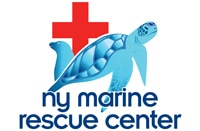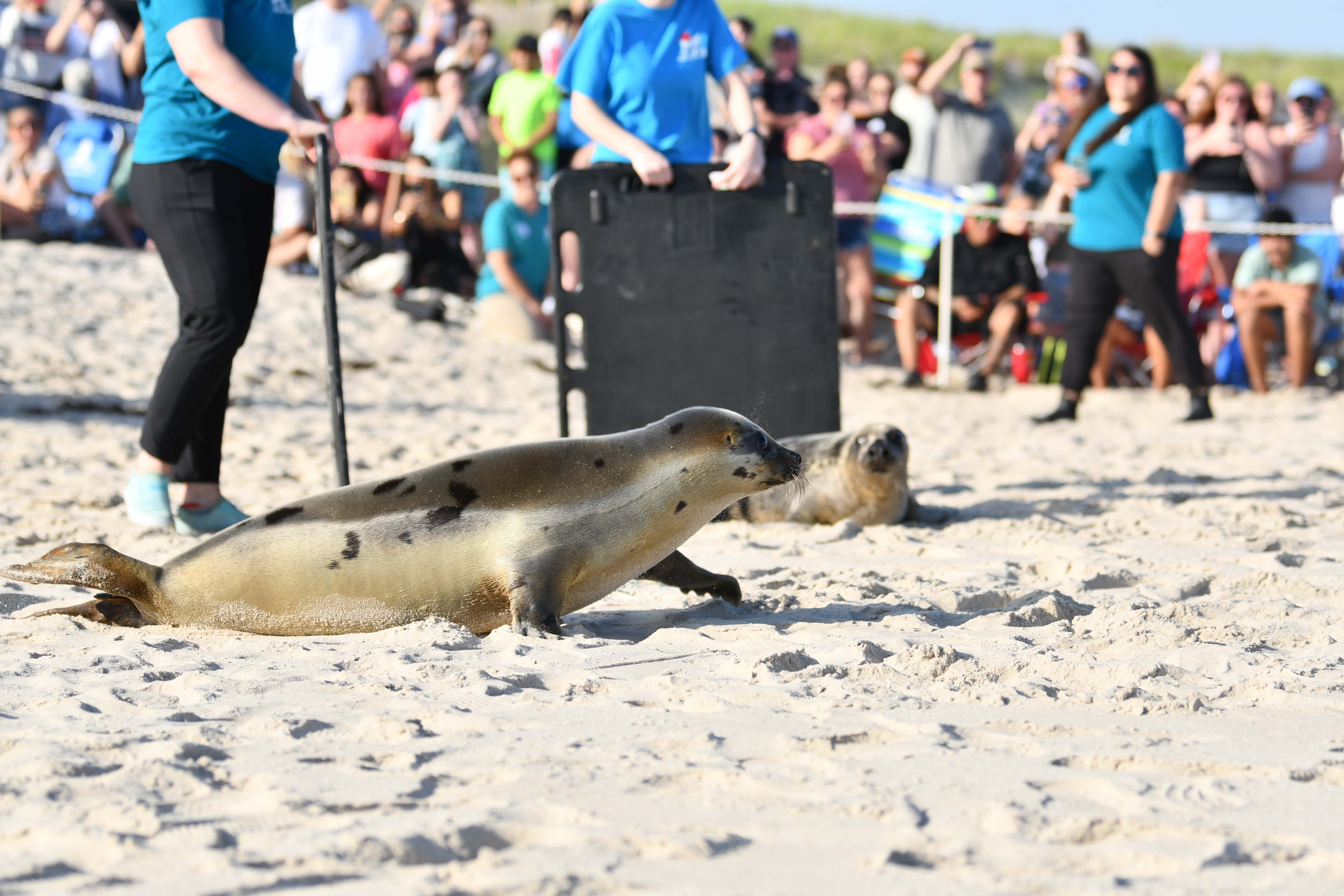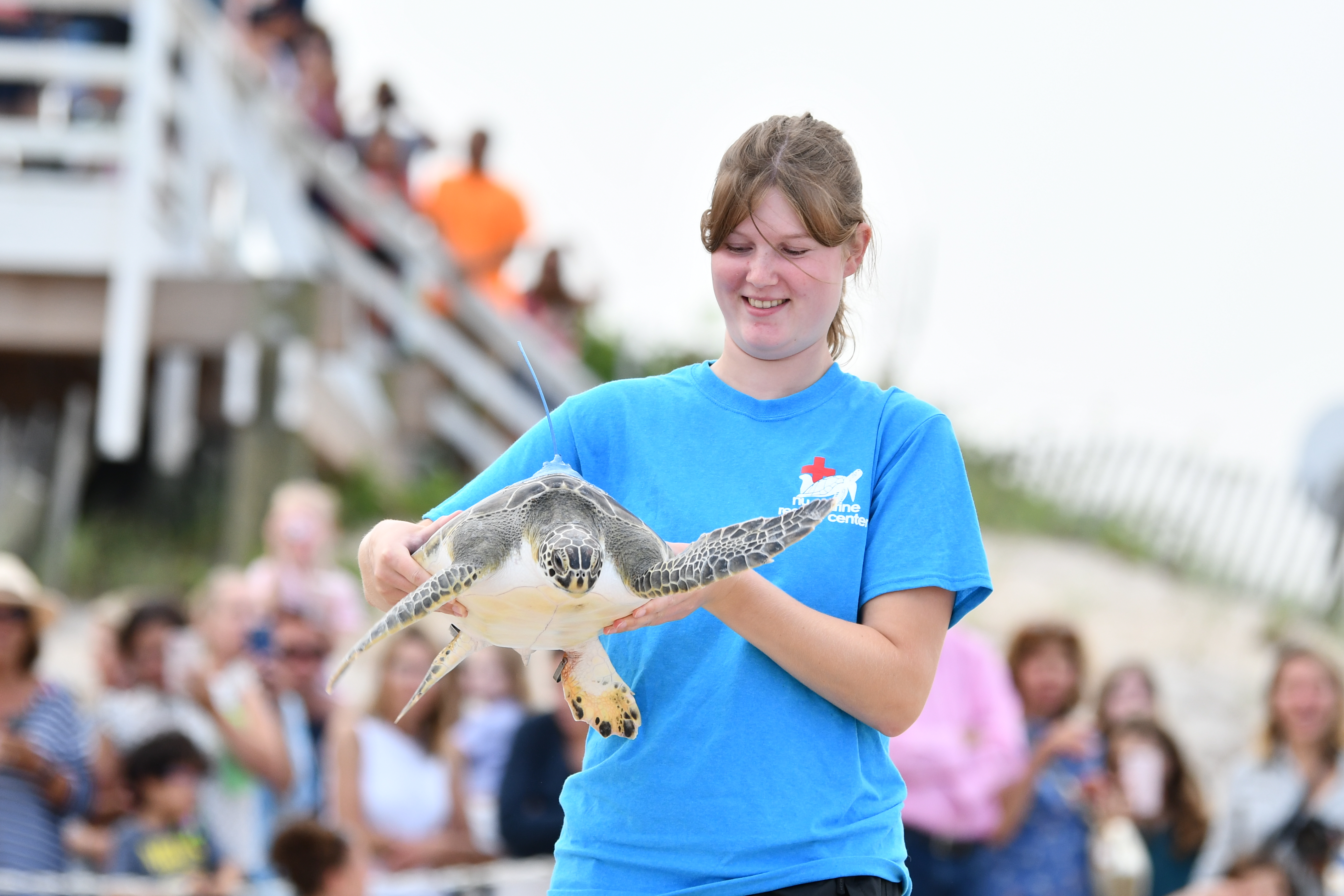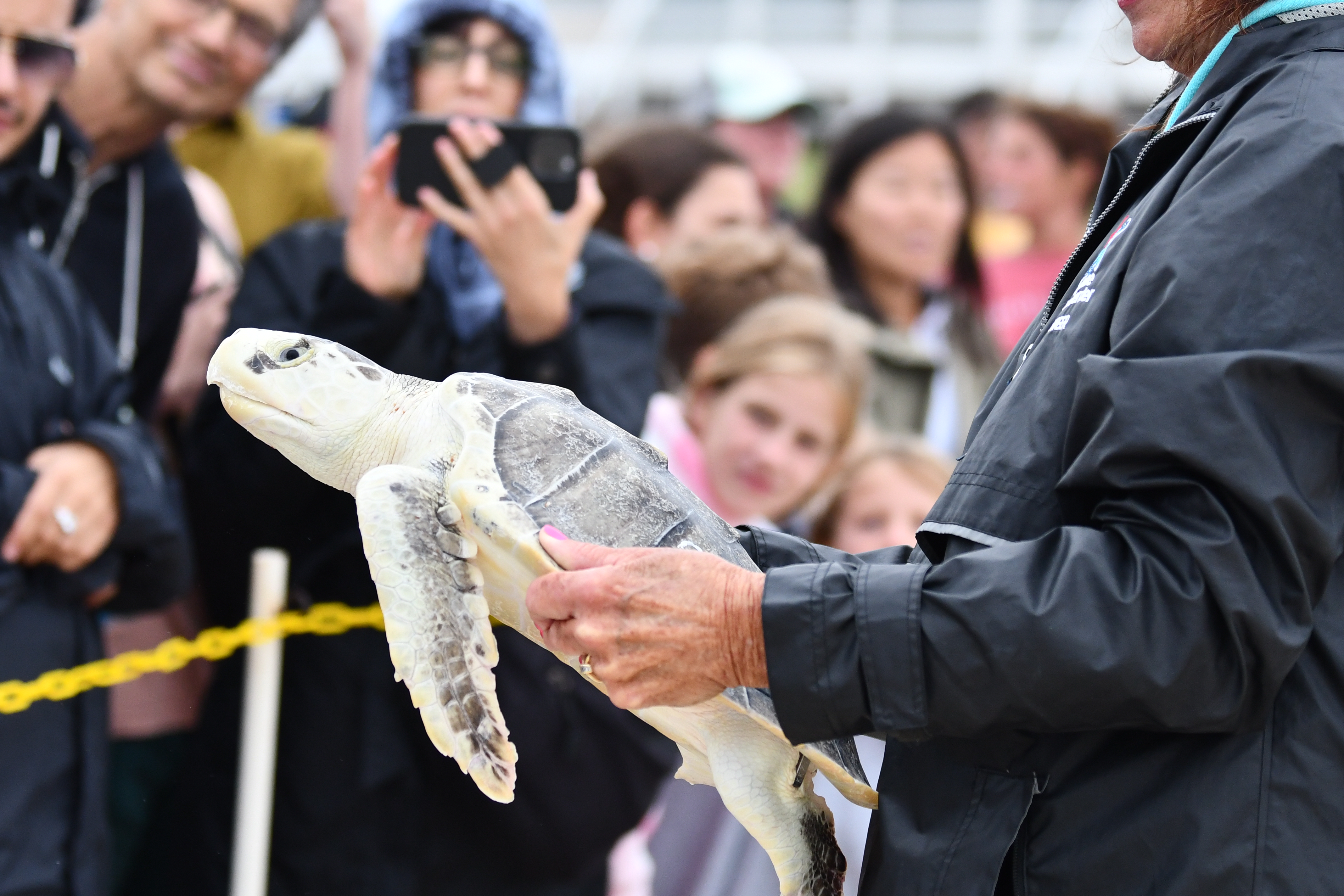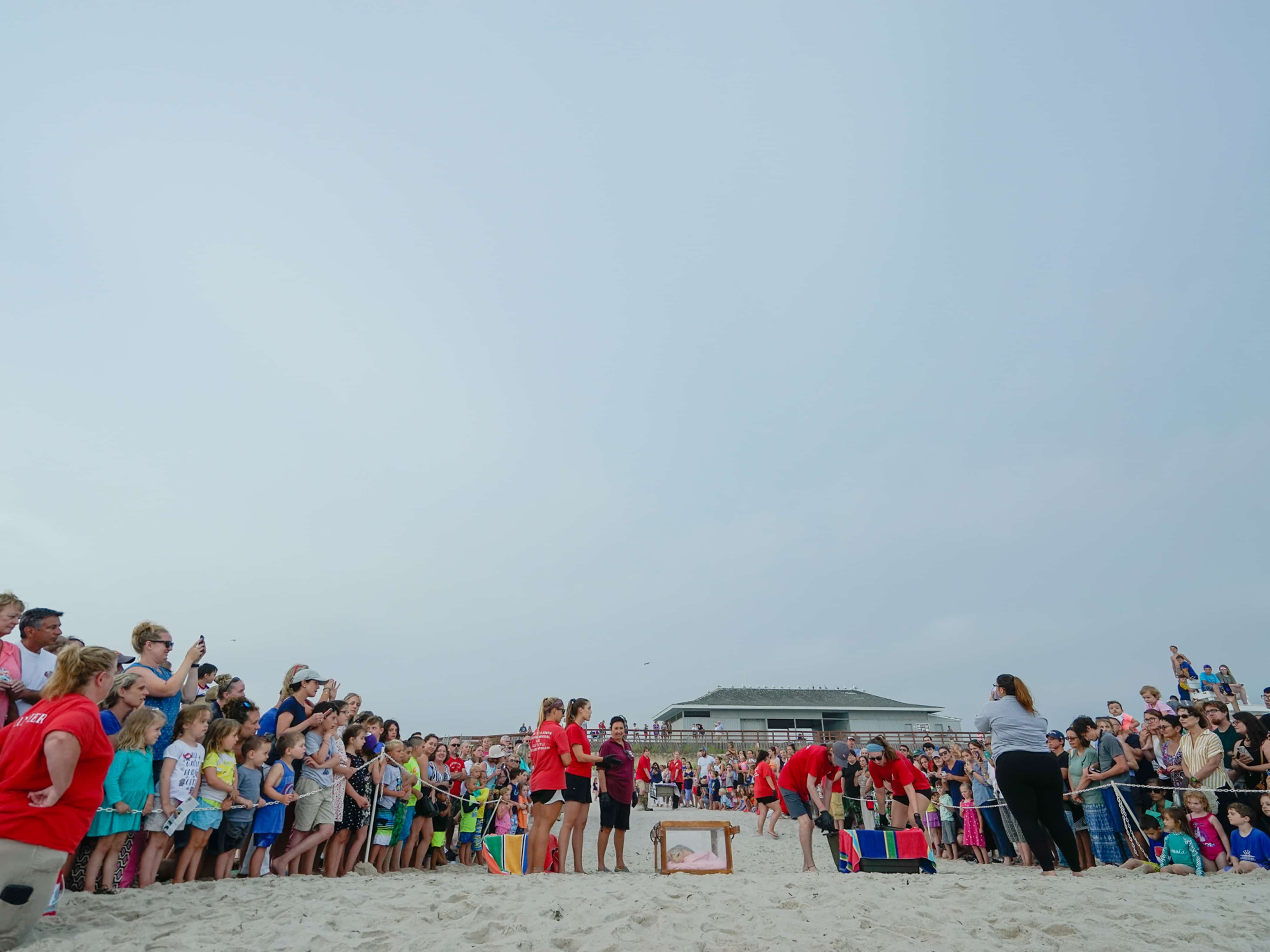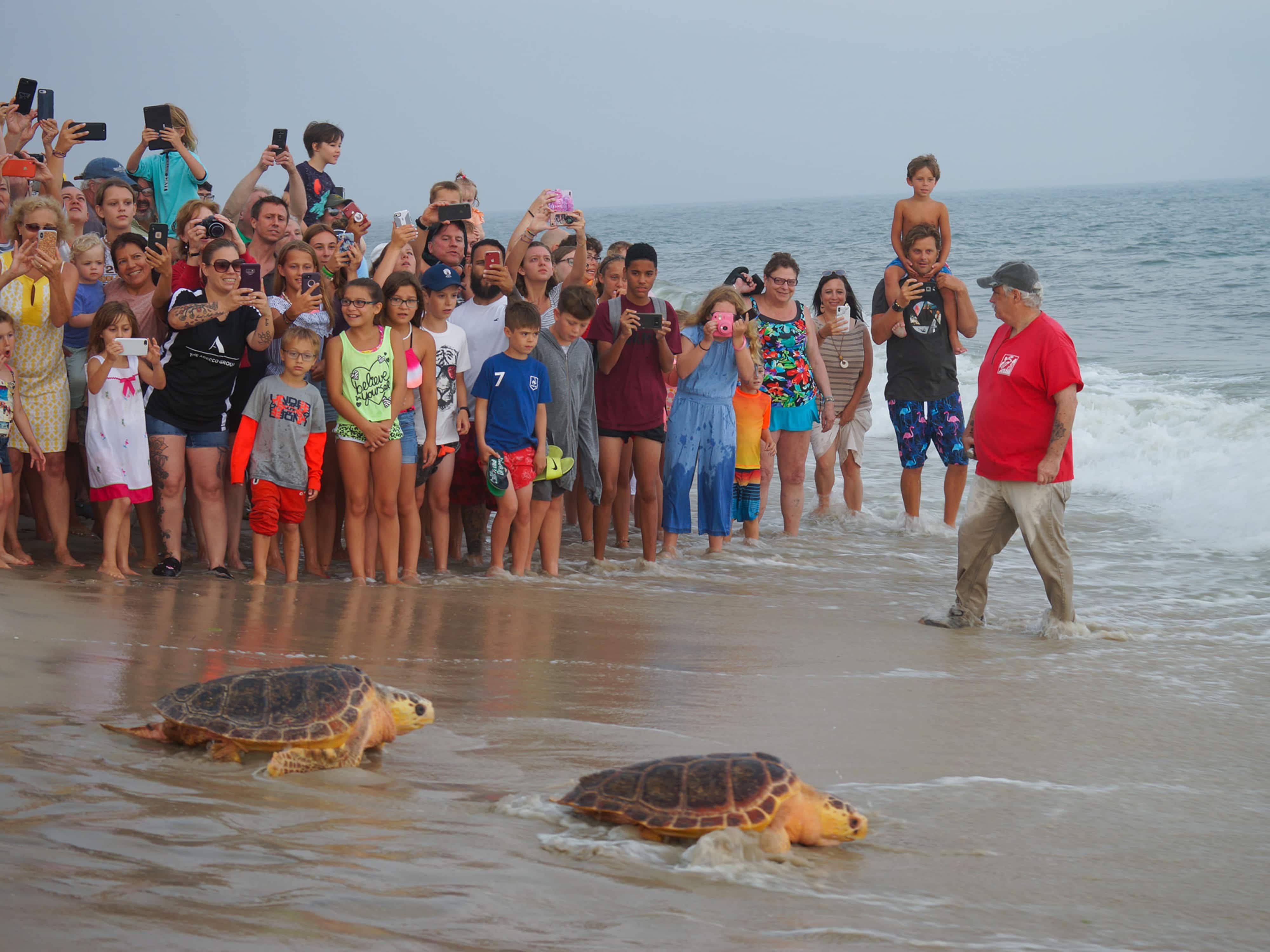What We Do
Total Dedication…From Response to Research
Make a Donation
Volunteer
What We Do
Total Dedication…From Response to Research
Make a Donation
Volunteer

Response & Rescue
The New York Marine Rescue Center (NYMRC) responds to sea turtles, seals, small cetaceans (dolphins and porpoises) in New York State. Many reports of sighted or stranded marine life come through the NY State 24-hour hotline number at (631) 369-9829. The public is encouraged to contact us with information including location, photos, and as many details as possible. It is important to remember that all of these animals are federally protected under the Marine Mammal Protection Act (MMPA) and the Endangered Species Act (ESA), and you must maintain a distance of at least 50 meters (150 feet) away at all times. Interfering falls under harassment, and may cause undue stress to these animals, as well as jeopardize your safety.
Invisible
What Is A "Stranded" Animal?
A stranded animal refers to any creature that comes ashore in a helpless position, whether it is alive or deceased. Animals that are sick, injured, or lost may become stranded on beaches or in waterways in which they are unable to free themselves. Stranding is commonly associated with animals that are still alive, while beaching refers to animals that are already deceased. However, stranding does encompass both alive and deceased animals. Be aware that seals, in particular, may “haul out” on a beach or rocks to rest, and their presence does not necessary represent a stranding.
To report a stranding, please call the 24-hour hotline immediately at (631) 369-9829. Please provide the location, details, and your contact information so that our trained biologists and staff may assist.
To report a sighting by email, click here. Photos and video are greatly appreciated, but please do not take risks that may endanger your safety or that of the stranded animal.
Rehabilitation & Release
Over 3,900 animals since inception in 1996
The New York Marine Rescue Center has rescued more than 3,900 animals since inception in 1996. Under research efforts, rehabilitated animal release and tracking is one of our primary goals. Tracking information through satellite tags, radio tags, and flipper tags provides valuable information on the various species as they re-enter the wild. The data obtained assists in furthering our mission of preserving and protecting the marine environment through conservation efforts including education, rehabilitation, and research. Since 1996, we have rehabilitated and released over 119 sea turtles, 762 seals, and 7 cetaceans.
Each animal is unique, and rehabilitation procedures are determined on a case-by-case basis. Just as when humans go to the doctor, each animal that comes to NYMRC has a program tailored to suit their needs. When a report is received, a team of biologists, interns, and/or volunteers conducts a field assessment to determine if the animal does in fact need to come back for rehabilitation. Sometimes if the animal appears to be in good condition, it will be left on the beach for monitoring. Not all animals on the beach are stranded and need rehabilitation.
When an animal arrives back at our facility, it will be triaged. A physical exam will be performed by biologists with a team of interns and volunteers, data will be collected through examinations and blood work, and volunteer veterinarians will make a diagnosis. Some examinations include taking measurements to see if the animal is within normal range for its species, temperature and heart rate are checked, radiographs to check the lungs, and blood samples to determine infection, dehydration, and more. The in-house lab allows us to perform many of these vital tests.
After a plan of action is determined for the animal, we will work alongside the volunteer veterinarians to bring the animal back to good health. The average seal spends eight weeks in rehabilitation, and the average sea turtle spends 242 days. Once an animal is healthy again, and is determined to be successful if released into the wild, the National Oceanic and Atmospheric Administration (NOAA) Fisheries will grant approval for release.
When & Where?
NYMRC often releases rehabilitated seals and sea turtles near Tiana Beach in Hampton Bays, New York. This is an ideal location as it is close to the facility and requires short transportation for the animals. Shinnecock Bay has been known to have a population of seals as well. Whether under Ponquogue Bridge or at the ocean beach, this area is easily accessible to the public.
We work with the local organizations to determine the best release dates and times, and give as much notice as possible. The public is almost always invited to join us on these special occasions. To learn when an animal is being released, sign up for our mailing list or check our calendar! Please remember all releases are pending National Oceanic and Atmospheric Administration (NOAA) approval.
When & Where?
NYMRC often releases rehabilitated seals and sea turtles near Tiana Beach in Hampton Bays, New York. This is an ideal location as it is close to the facility and requires short transportation for the animals. Shinnecock Bay has been known to have a population of seals as well. Whether under Ponquogue Bridge or at the ocean beach, this area is easily accessible to the public.
We work with the local organizations to determine the best release dates and times, and give as much notice as possible. The public is almost always invited to join us on these special occasions. To learn when an animal is being released, sign up for our mailing list or check our calendar! Please remember all releases are pending National Oceanic and Atmospheric Administration (NOAA) approval.
Research
Since inception, NYMRC has responded to over 4,000 sick and injured marine mammals and sea turtles. Stranding and tracking information through satellite tags, radio tags, and flipper tags provides valuable information into the marine environment and its inhabitants, particularly as they re-enter the wild. The data obtained assists in furthering our mission of preserving and protecting the marine environment through enhancing our understanding of different species, including growth rates, age at maturity, reproductive seasons, longevity, migration patterns, illnesses and death, environmental changes and disturbances, and much more.
Track Our Recent Releases!
Before any animal is released, NYMRC staff provides various types of tags that help identify these individuals during future sightings. All released marine mammals and sea turtles receive a tag with a specific ID number which is attached to the hind flipper for seals and sea turtles and on the dorsal fin for cetaceans.
One type of tag that provides important information are called telemetry devices, which include satellite tags. NYMRC can attach these devices to released candidates to help further understand their behavior post rehabilitation. These satellite tags allow us to track the animal’s movement pattern and provide insight on what these animals do once they have been given a second chance at life.
All of this data helps support the New York Marine Rescue Center’s marine mammal and sea turtle conservation work.
